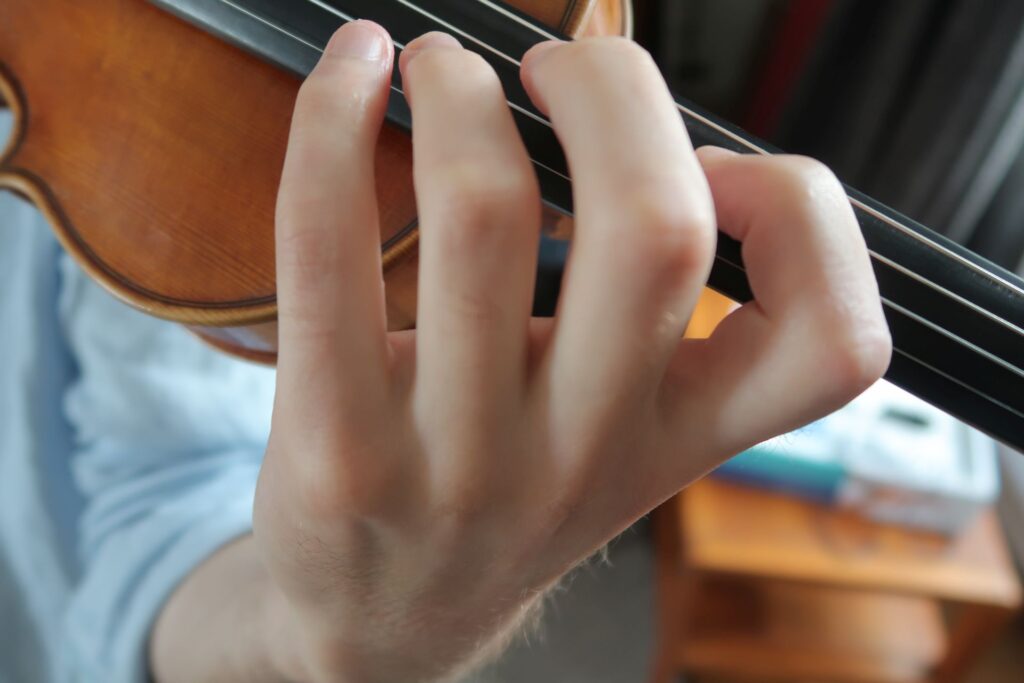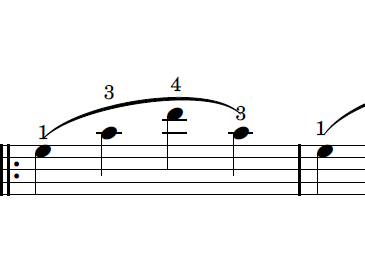Today, we’ll explore a concept that can greatly improve our intonation when playing in 1st position: sympathetic vibrations of open strings. Specifically, we’ll delve deeper into the placement of the 1st finger on the G-string (A) and D-string (E) in 1st position.
At the heart of this phenomenon lies the concept of the overtone series. Every vibrating string has a fundamental frequency, which corresponds to the pitch produced when the entire length of the string is set into motion (the open string). But that’s not all – when we play a note, the string also vibrates in multiple segments, creating harmonics known as overtones.
Let’s take the note A, played with the 1st finger on the G-string, as an example. When we play it in tune with our open A-string, we’ll notice something happening: The A-string starts to vibrate. And if we pay close attention, we can hear and feel the sympathetic response from the E-string, as well. The E-string vibrates in harmony with the A, producing a delightful ringing sound that complements our A note beautifully.
Similarly, when we place the 1st finger on the D-string to produce the note E, another set of sympathetic vibrations occurs. The E-string resonates in unison with the fundamental frequency of the E note we play on the D-string, creating a warm resonance.

At first, it can be challenging to notice the sympathetically sounding E-string while continuing to play the note with the 1st finger. Give it a try, and listen very carefully to see if you can hear the E-string in the background:

To experiment with this concept further, try varying your bowing while playing the A and E notes (in 1st position on the G and D-strings). Observe how bow speed, pressure, and contact points affect the sympathetic vibrations and the overall sound.
Feel free to explore other notes and strings to discover different sympathetic vibrations. Each note brings its own unique blend of harmonics.
It is worth mentioning that the notes A and E, which we practiced to be in tune with the open A- and E-strings, are not always the exact frequencies we use in every situation. Having control over the 1st finger placement of the note E on the D-string, for example, is crucial. While tuning it exactly in line with the open A-string (a perfect fourth) creates a beautiful ring from the E-string (when your violin is tuned in perfect fifths), you’ll notice it becomes too high to play in tune together with the open G-string.
In ensemble playing, these intonation nuances should be carefully considered as well. It is essential to deliberately choose which exact notes (frequencies) to use based on the context, and having the ability to make these adjustments will result in a more harmonious performance. So, let’s practice being mindful of these intonation subtleties to elevate our violin playing.
Learning about sympathetic vibrating strings and becoming more aware of them is like unlocking a hidden treasure in our violin playing. The overtone series reveals the intricacies of sound and how notes interact to create beautiful harmonies. So, let’s embrace these new-found resonances and refine our listening skills!


